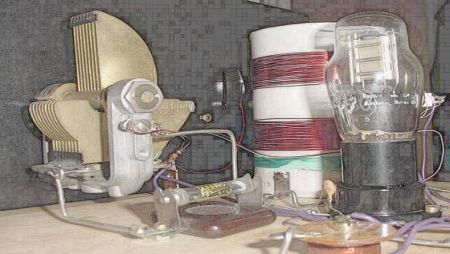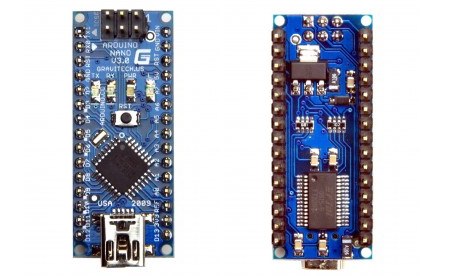There are no microcontrollers in this project. In fact you wont find a single transistor. This classic regenerative tube radio, modeled after an early 20th century homebrew is complete with schematic and additional photos. For those who are not familiar with tube designs and for simplicity, the regeneration circuit can be thought of as feedback though this relation may be argued. Read the rest after the break which includes a crash course in tube operation. Continue reading “Homemade Regenerative Tube Radio”
Day: July 13, 2009
Etch PCBs With Ferric Chloride And A Sponge

Etching a printed circuit board generally takes a bit of time and uses a lot of etchant. [TechShopJim] posted a method that uses a sponge to reduce the amount of etchant used while speeding up the entire process. First, a resist is applied using either a sharpie or the toner transfer method. Using gloves to handle everything, he soaked a sponge in ferric chloride and continually wiped a copper-clad board until all the exposed copper was removed. This technique moves the etchant around more, keeping “fresh” etchant closer to the copper. If you can’t procure ferric chloride, you can also use our method that uses 2 household chemicals: hydrogen peroxide and hydrochloric acid.
Arduino Nano Updated
The official Arduino Nano design has been updated to version 3.0. Like other new Arduino designs, it’s using the ATmega328 instead of the ATmega168. It’s also a slightly more reasonable $35. The small board is designed to be plugged directly into a breadboard and accessed via mini USB cable. This new design is also two layers instead of four making it easier to produce and modify. The new Nanos will ship at the end of the month.
4 LED RGB Controller

[Steven] was inspired by the BlinkM and Shiftbrite modules, but really wanted something that could be controlled via RS232. He decided to build his own RGB LED module capable of PWM that fit his needs. He’s using a PIC16F628 microcontroller as the base. Each module has 4 individually addressable LEDs with multiple intensities for each color. The units can be daisy chained as well. The schematics and PCB files are available on his site for download.
[via Hacked Gadgets]
Parts: 4×20 VFD Character Display (NA204SD02)

Futaba makes vacuum florescent character displays that can be used as a drop-in replacement for common character LCDs. VFDs have a wider viewing angle, and generally look cooler.
Futaba’s character displays can be interfaced using the standard 8-bit or 4-bit parallel LCD interface, or a simple two-wire protocol. The protocol type is set by resistors on the back of the display, so it’s not particularly easy to change without a hot-air rework station. Today we’ll demonstrate a serially-interfaced VFD using the Bus Pirate.
Continue reading “Parts: 4×20 VFD Character Display (NA204SD02)”
The Prism: Laser Synth-Guitar
[youtube=http://www.youtube.com/watch?v=HP2zbGes2Bg]
This is an interesting instrument. Part laser harp, part guitar, the Prism seems to have some potential. [Jeff-o] put some major time and effort into refinishing a guitar, building the circuit and putting it all together. He did a great job, the instrument looks fantastic and appears to work. We do have a request though; please post a video of it being played as an instrument. So many of these electronic instrument projects just spit out random noises. While we understand that some people are into that, we would love to hear some control. How about intentionally changing notes to make a melody? Based on the description, it should have control for pitch, and even speed of the oscillation. So let’s hear some music. We don’t care if you’re any good, just please play some music with it. If you would like to build your own, he has the schematics and PCB layout available for download.











